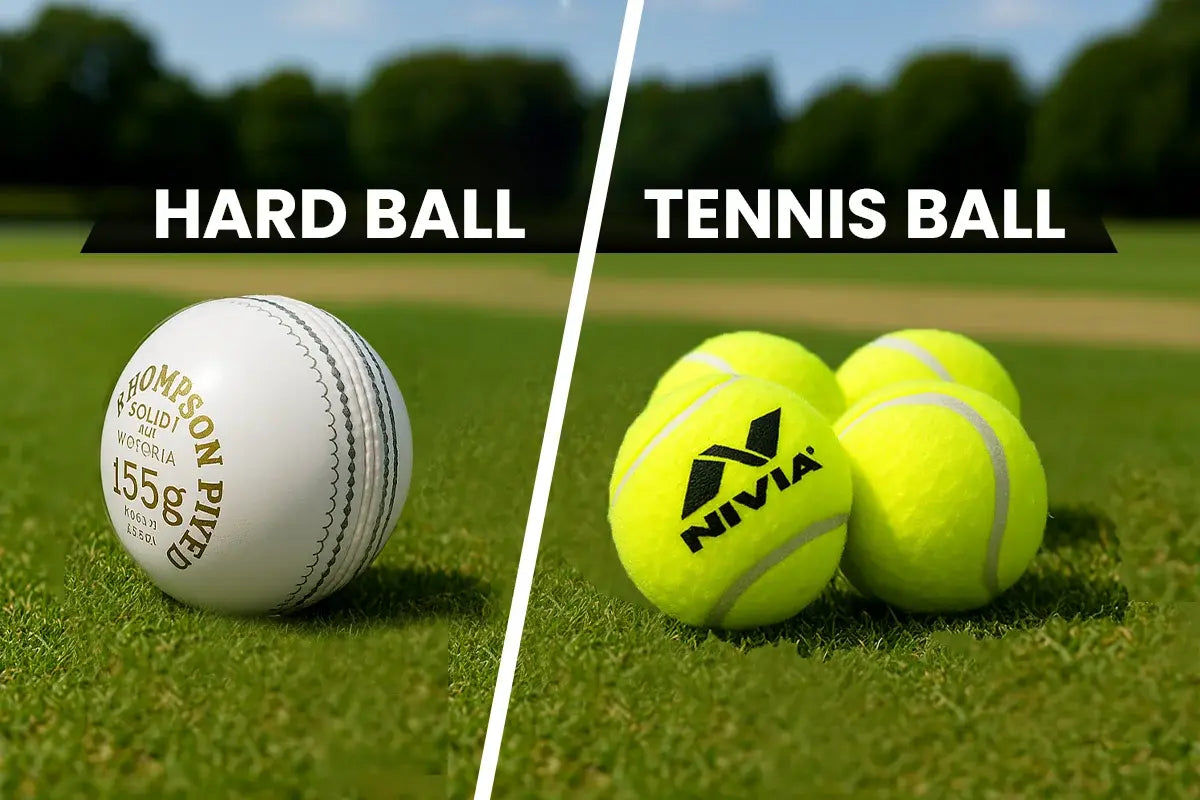The decision between a tennis ball and a hard ball may seem straightforward to athletes and sports enthusiasts, but it significantly impacts performance, safety, and enjoyment. Hard balls are designed for speed, accuracy, and high-impact play, while tennis balls are softer, lighter, and more versatile.
Understanding the differences between the two is essential for players at any level, whether you’re training, competing, or enjoying a casual game. This comparative guide of Hard Ball vs Tennis Ball breaks down the key distinctions to help you choose which ball is best suited for your sport and skill level.
Overview of Hard Balls
Sports balls made from strong materials designed to withstand significant impact are hard balls. Baseball, cricket, and hockey are among the most well-known sports in which these are used. They are usually defined by their weight, resilience, and stiffness.
Typical Uses
- Sports requiring exact control and high-speed ball contact use hard balls mostly.
- Often utilized in baseball games, it is made of a cork core covered with leather and yarn.
- Hard rubber or plastic puck for ice hockey.
Advantages of Using Hard Balls
- Built to resist severe impacts.
- Precision gives adept players more speed and control.
- Provides professional game conditions, particularly in cricket and baseball, for a more realistic playing experience.
Overview of Tennis Balls
Tennis balls are fluffy, light balls covered with a fuzzy felt material. Made of rubber and filled with pressurized air, they are intended to bounce and move smoothly across courts.
Common Uses
- For those who play casually on several court surfaces, tennis balls are a good option.
- Used in authorized tournaments under the direction of the ATP and WTA.
- Used in training and leisure activities.
Benefits of Using Tennis Balls
- Easily manageable and lightweight for beginners.
- Normally, they are less costly than hard balls.
- Suitable for safe use in various leisure activities and training sessions.
Hard Ball vs Tennis Ball: Key Differences
Construction and Materials
|
Aspect |
Hard Balls |
Tennis Balls |
|
Material |
Leather, cork, rubber |
Rubber with felt covering |
|
Construction |
Dense, layered for durability |
Soft, pressurized rubber core |
Variations In Size And Weight
- Hard Balls: Normally heavier, as in cricket balls, 145 grams.
- Tennis Balls: Standard size, 6 7–6 9 cm diameter; lighter at around 58 grams.
Effect on Player Abilities and Gameplay
- Hard balls: These demand more control, strength, and skill; hits are greater, so safety gear is critical.
- Tennis Balls: Perfect for novices, simpler to manage, and inspire longer rallies.
Choosing the Right Ball for Your Needs
Considerations Based on Sport or Activity
- Hard leather balls are always needed for professional cricket matches, but tennis balls or synthetic substitutes may be used for training or recreational matches.
- In tennis, only felt-covered pressurized tennis balls are suitable, but softer practice balls are ideal for kids and beginners.
- Other sports, like baseball and hockey, demand specific hard balls or pucks for accurate performance.
Skill Level of Players
- Beginners: Tennis balls are lighter and softer, making them easier to handle and safer, especially for novice players.
- Intermediate/Advanced Players: The challenge of hard balls helps players develop their strength, accuracy, and match-ready abilities
Environment and Playing Surface
- Indoor Play: It is safer and less harmful in indoor spaces to use tennis balls or softer alternatives.
- Playing outside: When durability is needed, hard balls perform best on turf, grass, or concrete.
- Training Environments: Hard balls should only be used to simulate matches; softballs are best for drills and skill development.
Wrap Up
In conclusion, your sport, skill level, and playing conditions will all influence your decision between a hard ball and a tennis ball.
Hard balls are perfect for competitive players because they offer durability, speed, and the realistic feel of professional gameplay. On the other hand, tennis balls are a must-have for beginners, casual play, and training sessions, due to their enhanced versatility and safety.
You can make an ideal choice that improves your performance and enjoyment by being aware of these distinctions.
If you’re ready to upgrade your sports gear, visit Yashi Sports now and explore our premium collection of balls. With top-quality products and reliable online shopping options, we make it easy to find the right ball for your game.
FAQs
Q1: What distinguishes a hard ball from a tennis ball?
Tennis balls are light, soft, and felt-covered for recreational use, while hard balls are sturdy and dense, designed for high-impact sports. This is the main difference between these two types of balls.
Q2. Which ball suits beginner players the best?
For beginners, tennis balls are usually preferable as they are lighter, softer, and simpler to manage, hence lowering injury risk.
Q3: Can I use a tennis ball for cricket?
Official cricket games call for hard leather cricket balls for legitimacy and performance, even if some casual or practice cricket sessions may use tennis balls.
Q4. Where to buy a cricket ball online?
From several online sports stores, you may get quality cricket balls.

